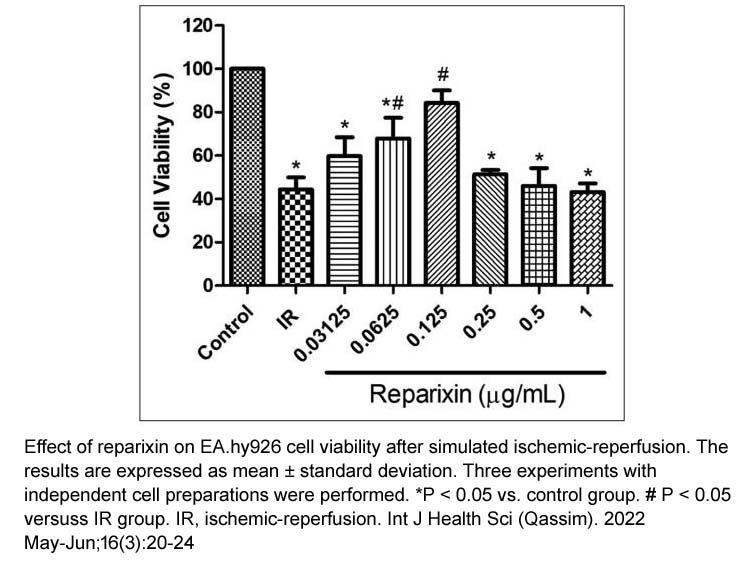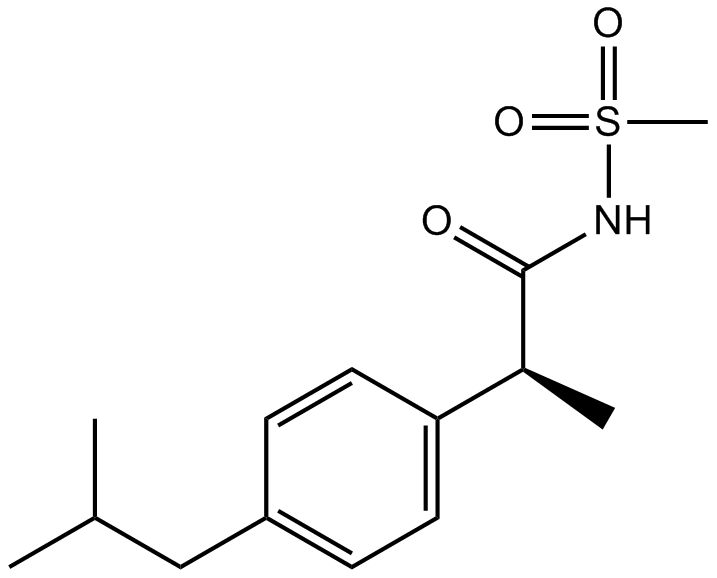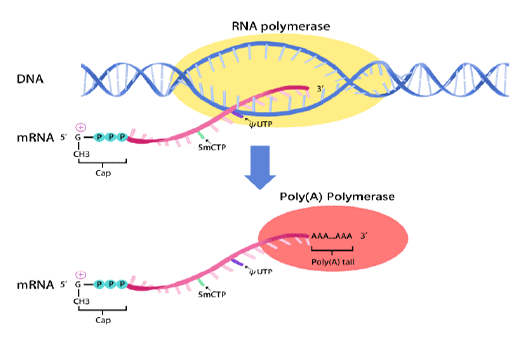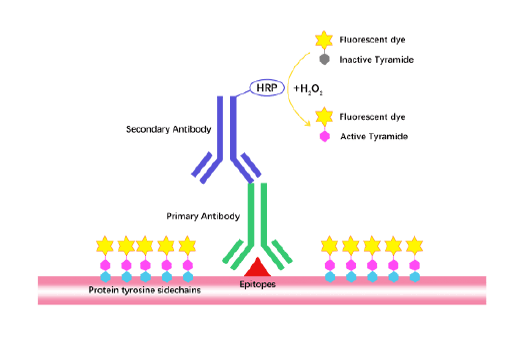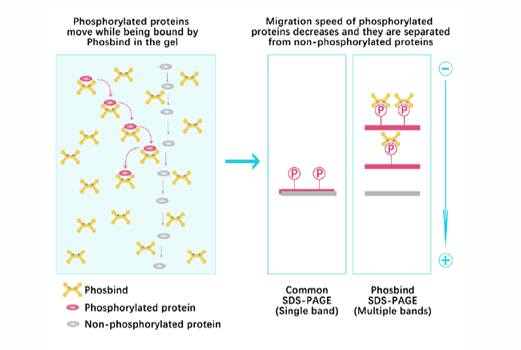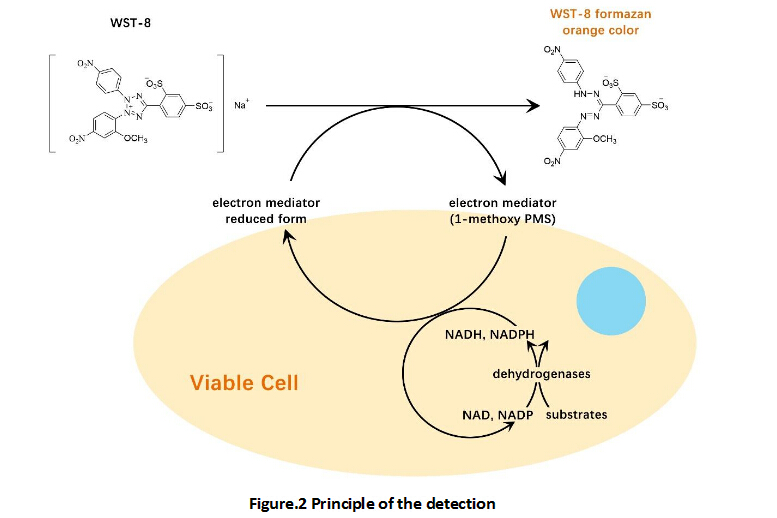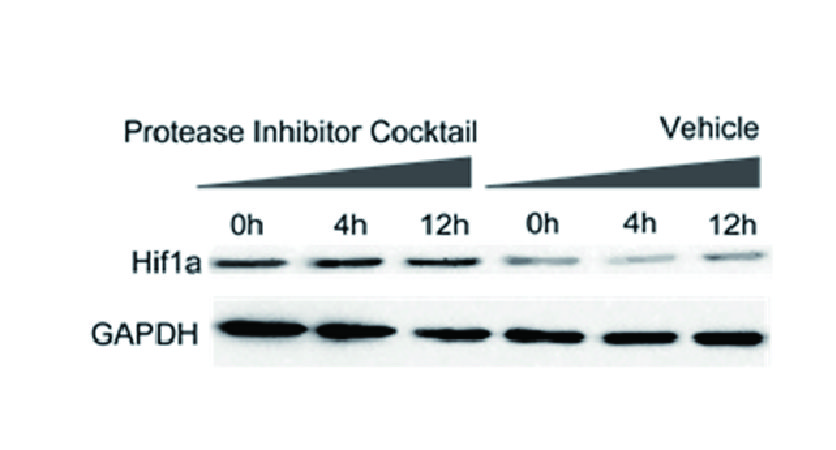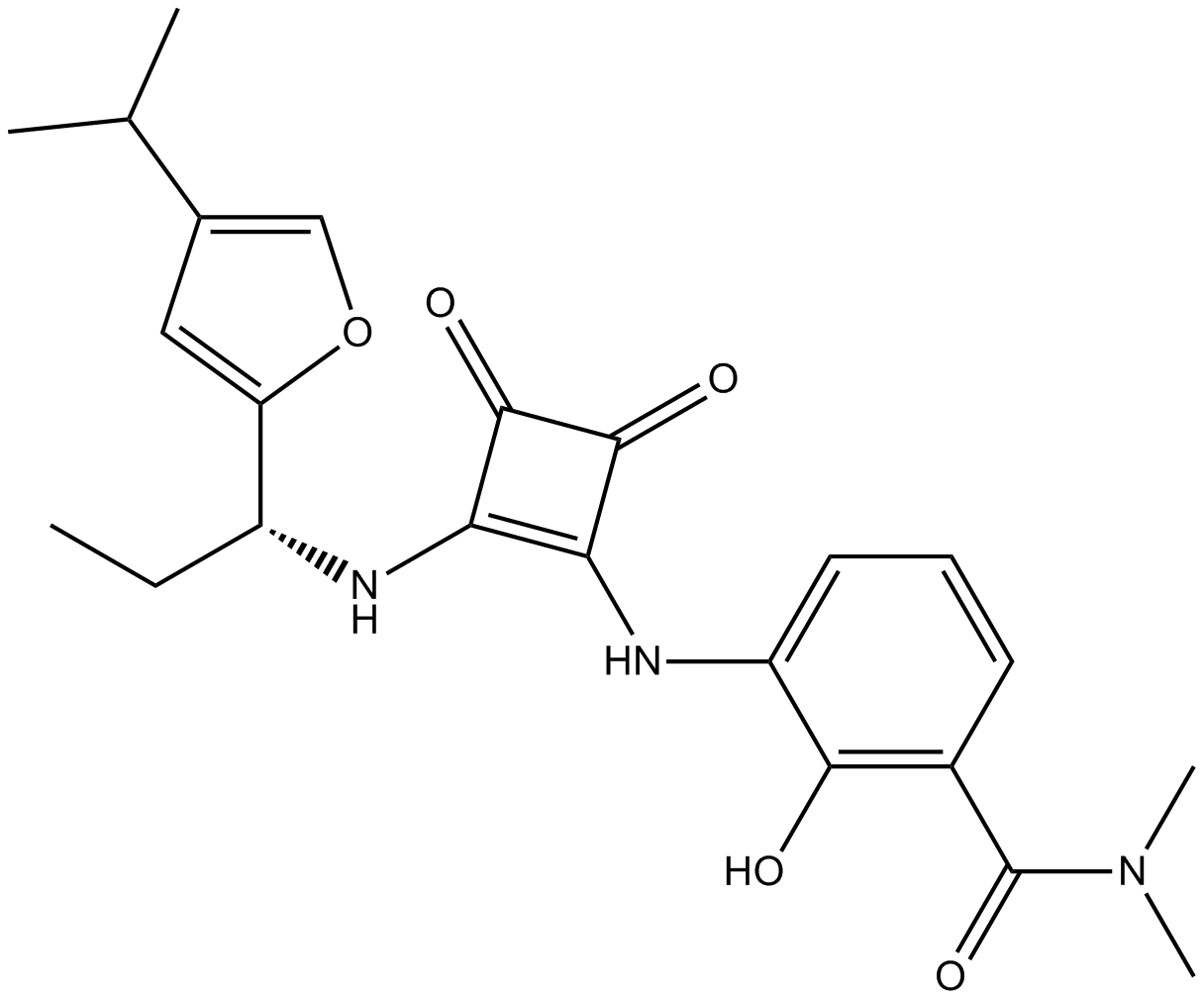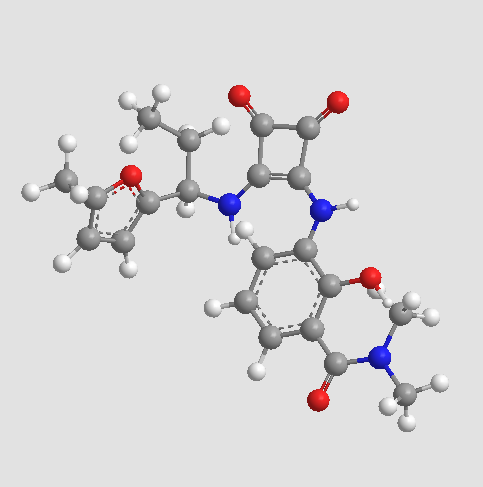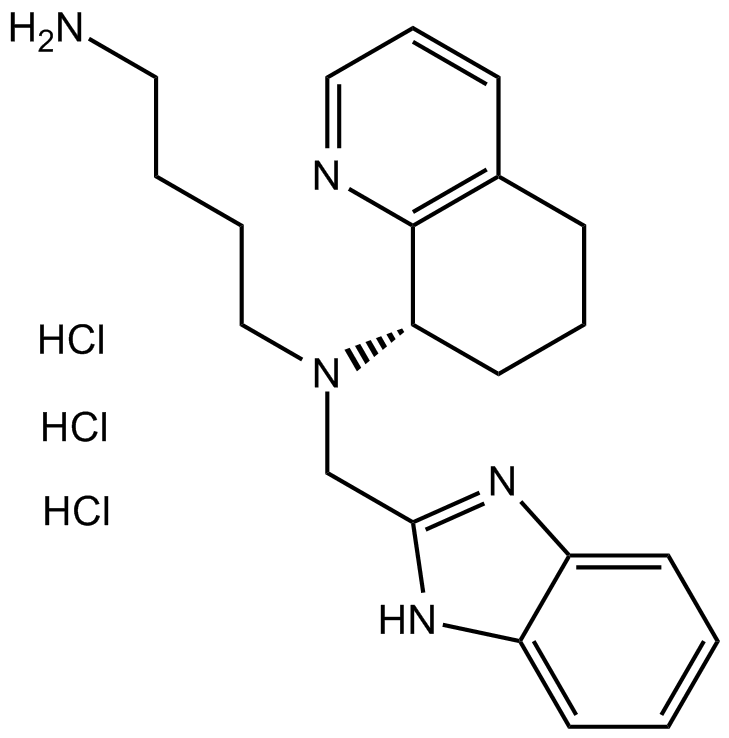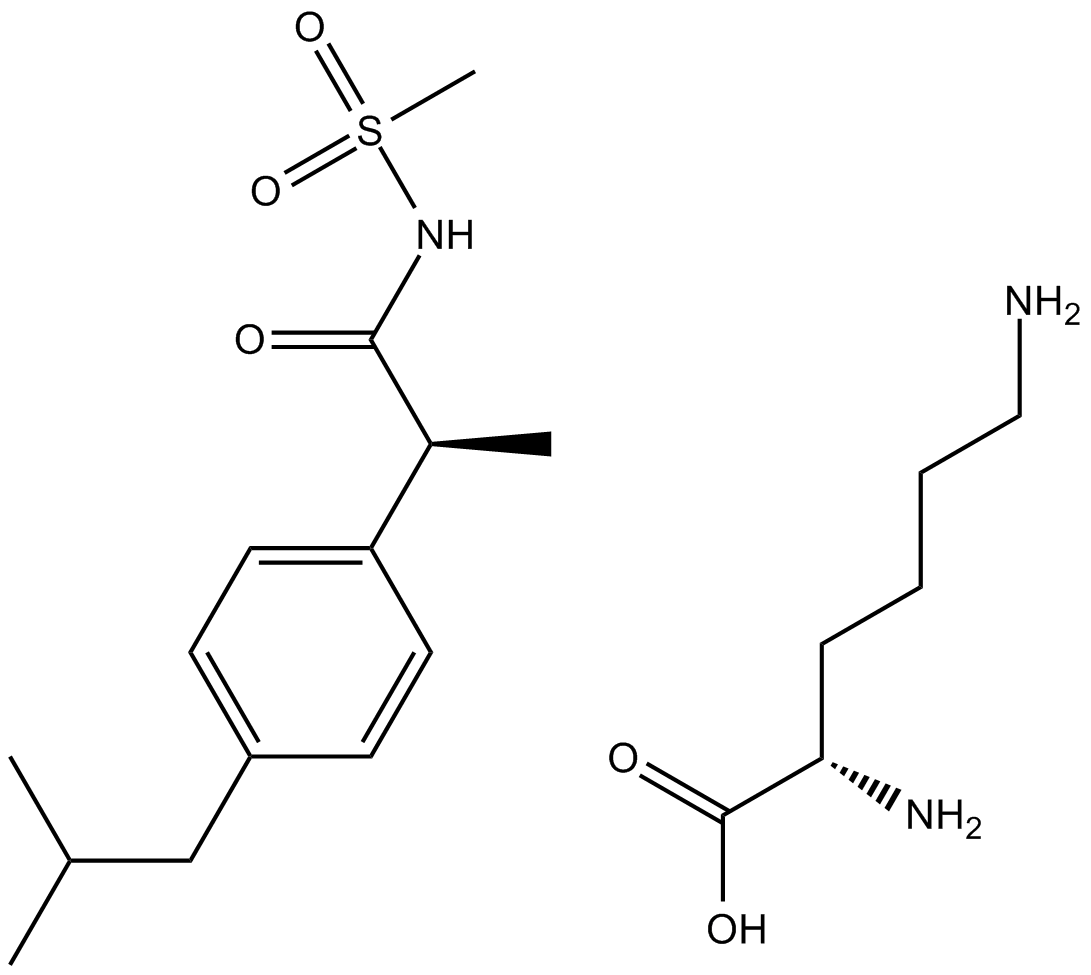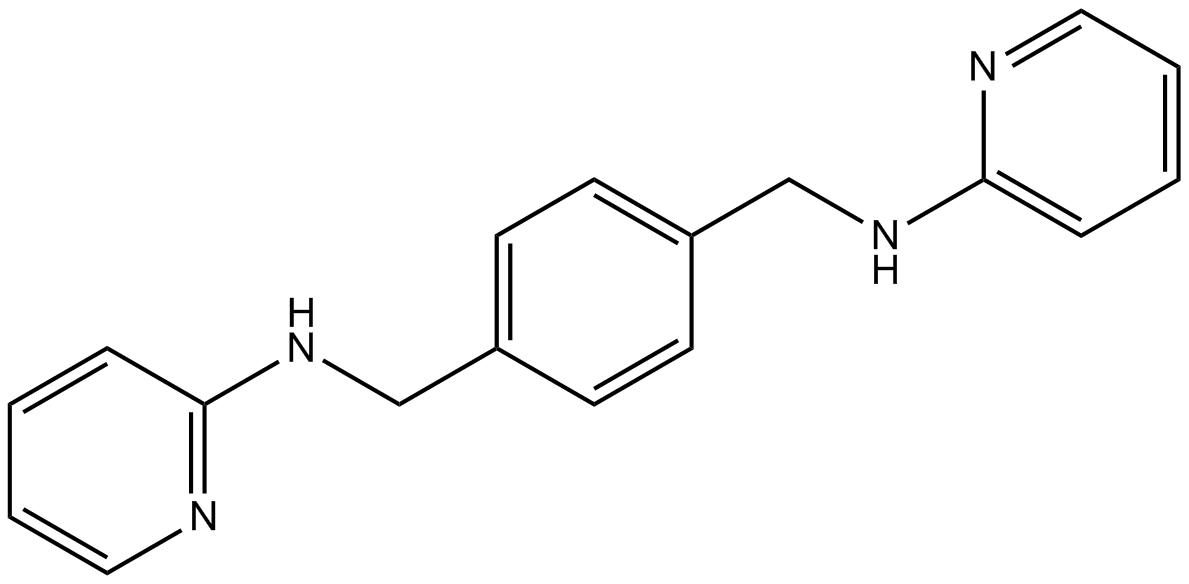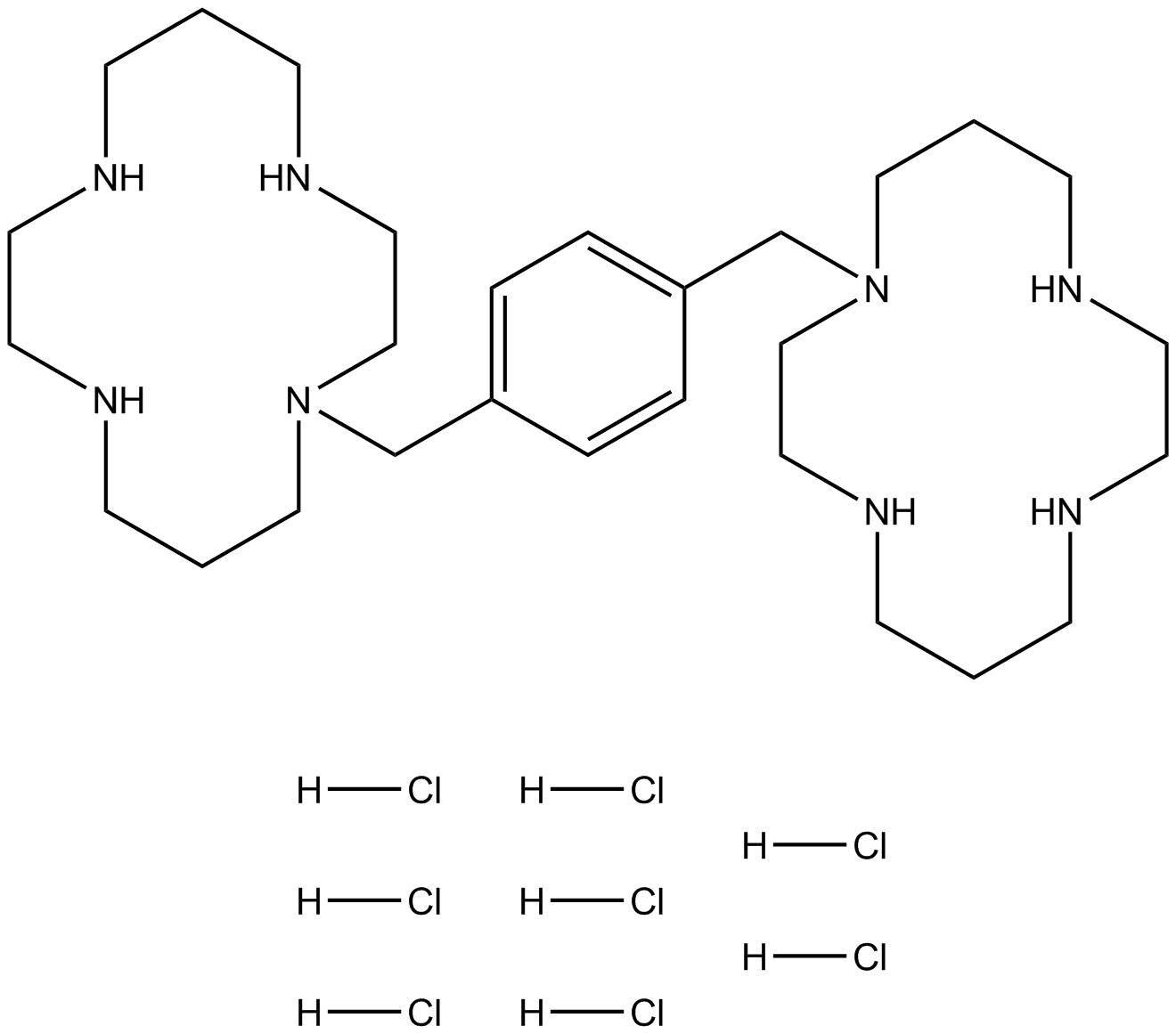Reparixin
Reparixin is a non-competitive allosteric inhibitor of CXCR1/2.
CXCR is a 7-transmembrane G protein-coupled receptor. CXCR plays a critical role in the development of different models of ALI Following engagement of this receptor, the Gbg-complex dissociates from the Gai-subunit and can activate phosphoinositide-3 kinase, different subtypes of phospholipase C and P-Rex-1. The downstream effectors of these molecules initiate a broad range of functional responses, including arrest from rolling, cytoskeletal rearrangement, cell polarization, chemotaxis, degranulation and respiratory burst.
Reperixin, specifically blocks CXCR1/2-mediated mouse and human neutrophil migration in vitro without affecting other receptors. Reparixin reduces ligand binding to human CXCR1 and CXCR2, calcium influx and downstream signalling in response to human CXCL8 and neutrophil recruitment into the liver in a mouse model of ischaemia-reperfusion injury. Reparixin reduced neutrophil recruitment and liver damage by approximately 30% and 80% in a model of ischaemiareperfusion injury.[1,2]
Reparixin reduced oligodendrocyte apoptosis, migration to the injury site of neutrophils and ED-1-positive cells. The best beneficial outcome of reparixin treatment will require 7-day administration either by i.p. route (15 mg/kg) or subcutaneous infusion via osmotic pumps (10 mg/kg), reaching a steady blood level of 8 μg/ml. Methylprednisolone are used as a reference drug, and such treatment reduced cytokine production but failed to affect the rate of hind limb recovery. [1,2]
References:
[1] A Zarbock, M Allegretti and K Ley. Therapeutic inhibition of CXCR2 by Reparixin attenuates acute lung injury in mice. British Journal of Pharmacology (2008) 155, 357–364.
[2] Alfredo Gorio, Laura Madaschi, Giorgia Zadra et al. Reparixin, an Inhibitor of CXCR2 Function, Attenuates Inflammatory Responses and Promotes Recovery of Function after Traumatic Lesion to the Spinal Cord. doi:10.1124/jpet.107.123679.
- 1. Piyanuch Thitiwuthikiat, Tamonlak Ta-uea, et al. "The protective effects of reparixin against endothelial ischemia-reperfusion injury." Int J Health Sci (Qassim). 2022 May-Jun;16(3):20-24. PMID: 35599941
- 2. Hyesol Lim, Minsoo Koh, et al. "Cancer-associated fibroblasts induce an aggressive phenotypic shift in non-malignant breast epithelial cells via interleukin-8 and S100A8." J Cell Physiol. 2021 Oct;236(10):7014-7032. PMID: 33748944
- 3. Wang T, Notta F, et al. "Senescent Carcinoma-Associated Fibroblasts Upregulate IL8 to Enhance Prometastatic Phenotypes." Mol Cancer Res. 2017 Jan;15(1):3-14. PMID: 27678171
| Physical Appearance | A solid |
| Storage | Store at -20°C |
| M.Wt | 283.39 |
| Cas No. | 266359-83-5 |
| Formula | C14H21NO3S |
| Synonyms | Repertaxin;DF 1681Y |
| Solubility | insoluble in H2O; ≥14.15 mg/mL in DMSO; ≥47.3 mg/mL in EtOH |
| Chemical Name | (2R)-2-[4-(2-methylpropyl)phenyl]-N-methylsulfonylpropanamide |
| SDF | Download SDF |
| Canonical SMILES | CC(C)Cc1ccc([C@@H](C)C(NS(C)(=O)=O)=O)cc1 |
| Shipping Condition | Small Molecules with Blue Ice, Modified Nucleotides with Dry Ice. |
| General tips | We do not recommend long-term storage for the solution, please use it up soon. |
| Kinase experiment [1]: | |
|
Binding assays |
Isolated PMNs (107×mL) were resuspended in RPMI 1640 and incubated at 37℃ for 15 min in the presence of repertaxin (1 mM) or vehicle. After incubation cells were resuspended (2×107/mL) in binding medium (RPMI 1640 containing 10 mg/ml BSA, 20 mM HEPES, and 0.02% NaN3) in the presence of repertaxin or vehicle. Aliquots of 0.2 nM of [125I]CXCL8 and serial dilutions of unlabeled CXCL8 were added to 106 cells in 100 μL of binding medium and incubated at room temperature for 1 hr under gentle agitation. Unbound radioactivity was separated from cell-bound radioactivity by centrifugation through anoil gradient (80% silicon and 20% paraffin) on a microcentrifuge. Nonspecific binding was determined by a 200-fold molar excess of unlabeled CXCL8. Scatchard analysis was performed with the LIGAND program. |
| Cell experiment [1]: | |
|
Cell lines |
Human polymorphonuclear cells (PMN) and monocytes and rodent peritoneal PMN. |
|
Preparation method |
Soluble in DMSO. General tips for obtaining a higher concentration: Please warm the tube at 37℃ for 10 minutes and/or shake it in the ultrasonic bath for a while. Stock solution can be stored below -20℃ for several months. |
|
Reaction Conditions |
45 min (human PMN), 1 h (rodent PMN), or 2 h (monocytes). |
|
Applications |
Repertaxin inhibits human PMN migration induced by CXCL8 and CXCL1 with IC50 values of 1 nM and 400 nM respectively, which are mediated by CXCR1 and CXCR2, respectively. Repertaxin also inhibits rodent PMN chemotaxis induced by CXCL1 and CXCL2. |
| Animal experiment [1]: | |
|
Animal models |
Rat model of liver postischaemia RI. |
|
Dosage form |
3, 15, or 30 mg/kg; 15 min before reperfusion (i.v.) and 2 h after reperfusion (s.c.). |
|
Applications |
Repertaxin (15 mg/kg) inhibits PMN recruitment into reperfused livers by 90% and significantly reducesliver damage. |
|
Other notes |
Please test the solubility of all compounds indoor, and the actual solubility may slightly differ with the theoretical value. This is caused by an experimental system error and it is normal. |
|
References: [1]. Bertini R, Allegretti M, Bizzarri C, et al. Noncompetitive allosteric inhibitors of the inflammatory chemokine receptors CXCR1 and CXCR2: prevention of reperfusion injury. Proc Natl Acad Sci U S A, 2004, 101(32): 11791-11796. |
|
Quality Control & MSDS
- View current batch:
Chemical structure
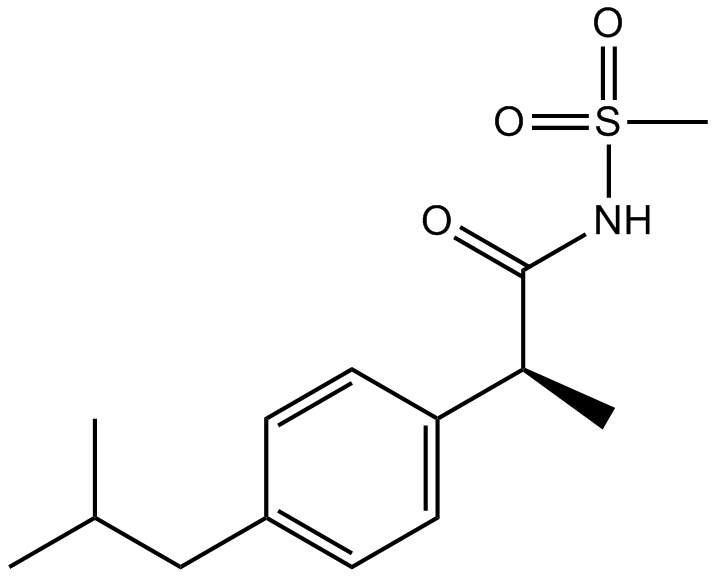
Related Biological Data
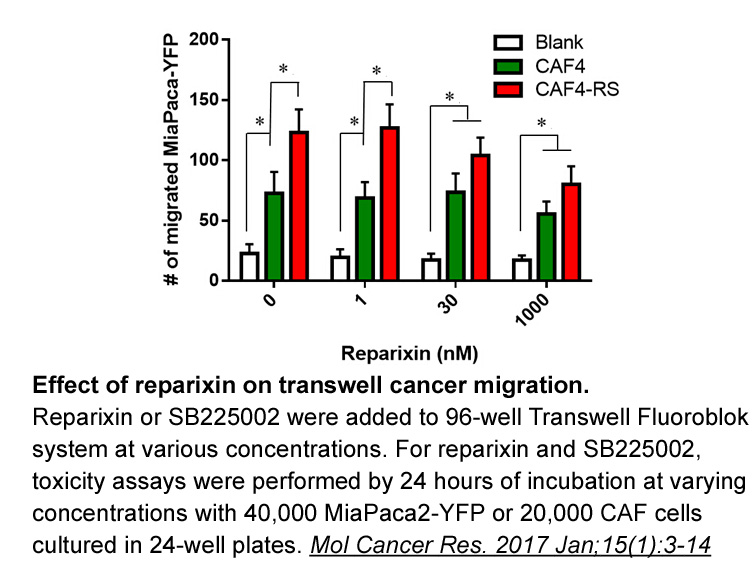
Related Biological Data
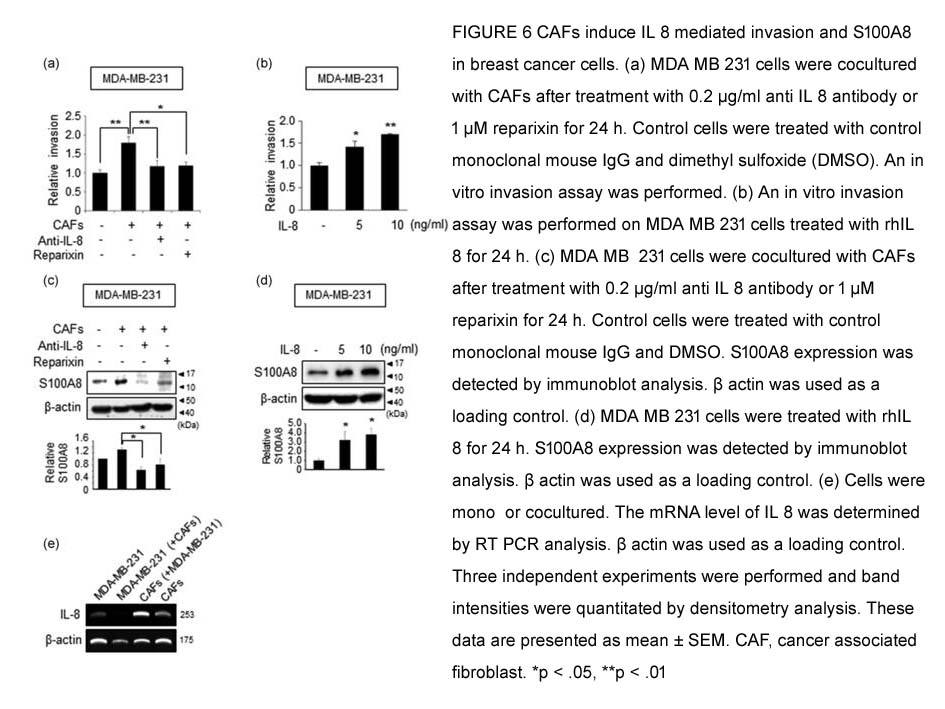
Related Biological Data
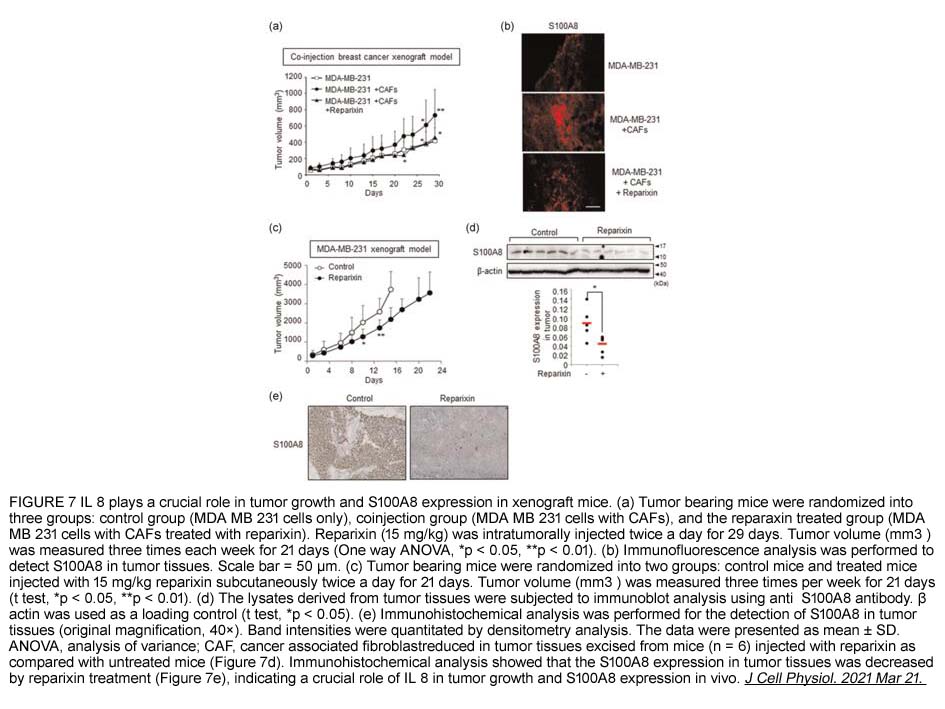
Related Biological Data
